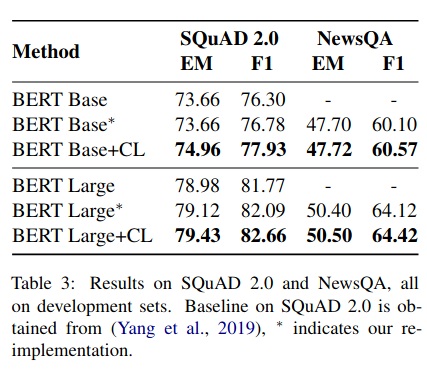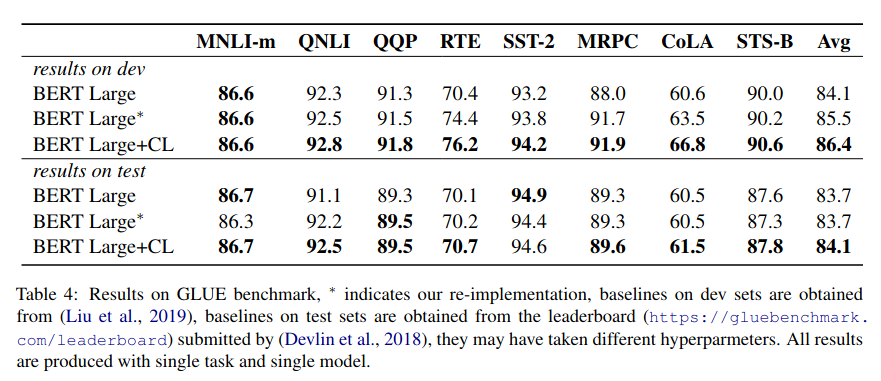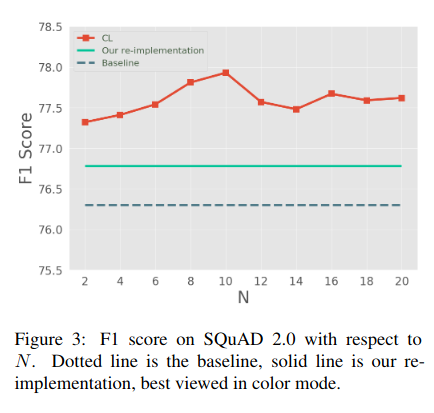Rylan Schaeffer

Resume
Research
Learning
Blog
Teaching
Jokes
Kernel Papers
Curriculum Learning for Natural Language Understanding
Authors: Xu et al.
Venue: ACL 2020
Idea
Given a dataset for a natural language model, the authors aim to automate construction of a curriculum. To do this, they propose the following:
- Split your dataset into N random, equal sized data subsets
- Train N models
- For each model, feed it the data subsets used to train the other models and measure the model’s performance (e.g. accuracy, F1, MSE, whatever) on each datum. That means each datum has N-1 values measuring how well the other N-1 models that haven’t seen it performed on it.
- For each datum, average the N-1 scores and sort based on the average score
- Train a new model from scratch, starting with the easiest datum and adding more over time
Results
On SQuAD (reading comprehension) and NewsQA (reading comprehension), the curriculum enables a trained model to perform better at the end of training

They make a similar claim on GLUE

Bizarrely, having even N=2 seemed to deliver almost as much benefit as N=10, and there was no monotonic non-decrease with N.

Notes
- I didn’t see any learning curves to better understand the effect the curriculum has.